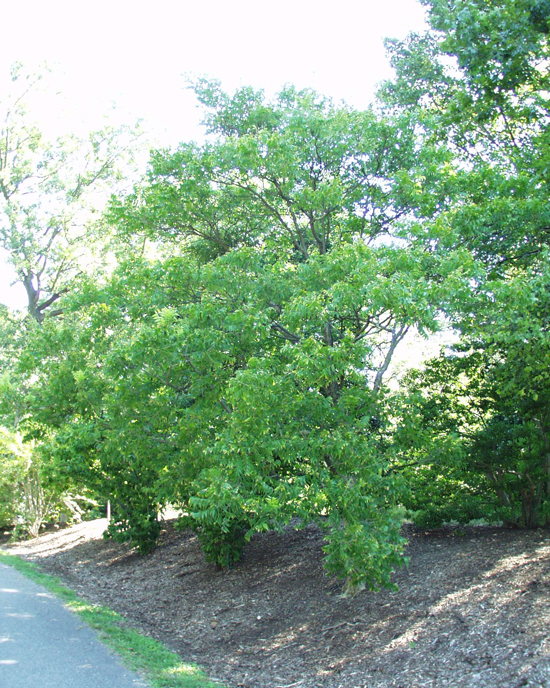Sapindus drummondii
Western Soapberry

Photo by W. Mark and J. Reimer courtesy of SelecTree
Sapindus drummondii, western soapberry, is a medium-sized deciduous tree with erect branches and a low, rounded canopy. It produces clusteres of white flowers and white fruit that is attractive but poisonous to humans. It grows quickly and is drought tolerant. Potential issues include suckering habit.
Fruit is poisonous to humans. "Allergy, Poisonous and Irritant Health Hazard." Suckering roots.
Fair potential utility as an urban tree based on evaluation of 14 trees, healthy crown, 93% survival, slow growth rate. Herbivory found on majority of individuals and some signs of leaf dieback. Many plants had twisted or curling central leaders in nursery that resisted training.
We got high rates of germination from 48-hour hot water soak and 24 hour aeration then greenhouse sowing in December. Seedlings are moderately fast growing with an unruly form.
